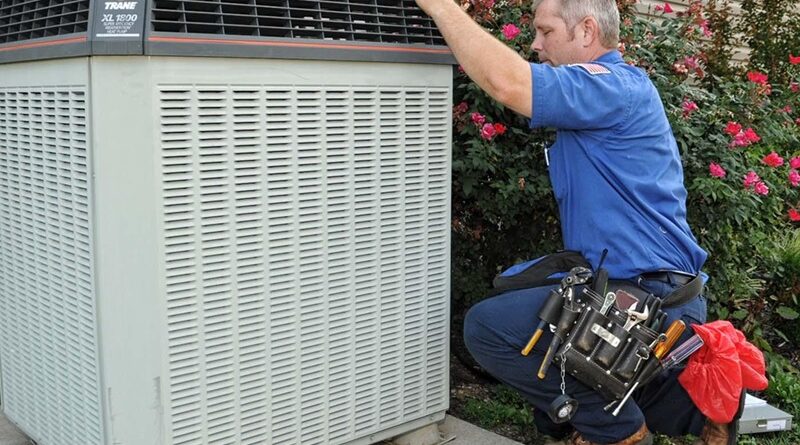Embrace Winter Warmth: Guide on How Heat Pump Installation Made
Heat pumps have totally changed the game when it comes to regulating house temperature. They’re eco-friendly and way more energy-efficient than old-school HVAC systems. Their ability to capture and redistribute environmental heat within or outdoors greatly reduces energy usage and carbon emissions, all while providing dependable comfort.
To make sure the installation of your heat pump goes off without a hitch, this detailed guide will take you step-by-step through the heat pump installation process. Anyone interested in sustainable comfort, whether they are a first-time homeowner installing a heat pump or a do-it-yourself enthusiast wanting to learn more, will find everything they need in this blog post.
How Do Heat Pumps Work?
A refrigerant is important for heat pumps because it easily changes between gas and liquid states. The basic workings of a heat pump consist of the following steps:
Evaporation:
The gaseous refrigerant absorbs heat from a low-temperature source (such as water, the earth, or air) via an evaporator coil. As it takes in heat, the refrigerant turns into a vapor at low pressure and temperature.
Compression:
The evaporating refrigerant is heated and pressed to higher pressures using a compressor. By increasing its energy level, the refrigerant is better prepared for the next part of the cycle through compression.
Condensation:
When a refrigerant vapor with high pressure and temperature flows through a condenser coil, it releases heat into a higher temperature area. This can be the inside of the system when it’s heating up or the outside when it’s cooling down. When the refrigerant releases its heat, it turns into a high-pressure liquid.
Expansion:
An expansion valve or similar mechanism lowers the pressure of the high-pressure liquid refrigerant as it passes through it. The pressure drop not only cools and partially evaporates the refrigerant but also returns it to its initial low-pressure, low-temperature state.
Types Of Heat Pumps
There are various types of heat pumps, each designed to work with a certain heat source. Heat pumps are classified into three types:
- Air Source Heat Pumps (ASHP)
- Geothermal Heat Pumps (GSHP) or Ground Source Heat Pumps (GSHP)
- Water Source Heat Pumps (WSHP)
Pre-Installation Preparation
Careful pre-installation preparations are essential before beginning the heat pump installation. This includes assessing your heating and cooling needs, selecting the appropriate heat pump size and capacity, and doing a site inspection to determine the best installation location.
Materials and Equipment Required
It is critical to have the necessary tools and materials on hand to ensure a successful heat pump installation process. The following materials and tools are required:
Tools Required
- Phillips and flathead screwdrivers
- Adjustable and needle-nose pliers
- Cutters for pipes or a hacksaw
- The pipe wrench
- a measuring tape
- Insulation tape or heat shrink tubing
Materials Required
- Indoor and outdoor heat pump unit
- Lines of refrigerant
- Electrical cables and wires
- Wiring for control
- Refrigeration line insulation
- Duct tape or mastic for duct sealing
- Fittings for the condensate drain line
- Screws, bolts, and nuts are used to secure units and components.
- Filters for air
- Thermostat
Steps for Heat Pump Installation
Step 1: Disconnect Existing Systems and Turn Off Electricity
- Turn off power to the HVAC system and associated circuits at the electrical panel.
- Disconnect and remove any existing ventilation, heating, or cooling systems being replaced by the heat pump.
Step 2: Assemble Outdoor and Indoor Components
- Follow manufacturer instructions to assemble the outdoor unit firmly, considering factors like ventilation, accessibility, and noise reduction.
- Choose an optimal location for the outdoor unit and install it on a sturdy base using mounting brackets or stands.
Step 3: Connect Wiring and Lines
- Connect refrigerant lines between the outdoor and indoor units, using proper insulation to prevent condensation and energy loss.
- Follow manufacturer instructions to connect electrical cables, ensuring correct wire size and voltage.
- Connect communication cables for thermostat control and any additional accessories to the control wiring linking indoor and outdoor units.
Step 4: Set Up and Install Thermostat
- Install the thermostat in a suitable location on an interior wall away from direct sunlight or drafts.
- Connect thermostat wiring as per manufacturer recommendations for accurate labeling.
Conclusion
We have included a layman’s explanation of the steps in this post to make the process of installing a heat pump appear straightforward. It is critical to remember that installing a heat pump is a difficult task that necessitates certain knowledge, skills, and equipment.
While some homeowners may be comfortable managing the installation themselves, there are compelling reasons to consider hiring HVAC professionals in Buford GA, such as HVAC replacement in Buford, GA, for this critical work.
FAQs
Q1: What is the primary function of a heat pump?
A1: A heat pump efficiently transfers heat from one location to another for both heating and cooling purposes.
Q2: How do I determine the proper size for my heat pump?
A2: To establish the required heating and cooling capacity, conduct a heat load assessment, taking into account parameters such as room size, insulation, and window count.
Q3: Can I DO heat pump installation on my own?
A3: Yes, you can do it at home following the above-mentioned detailed guide on heat pump installation,


